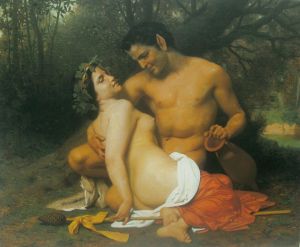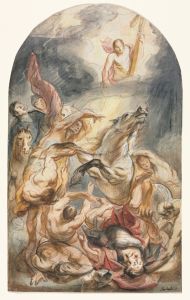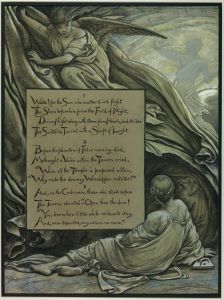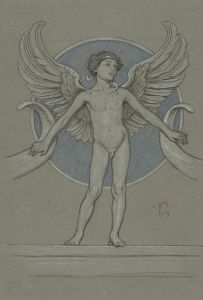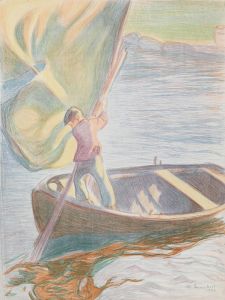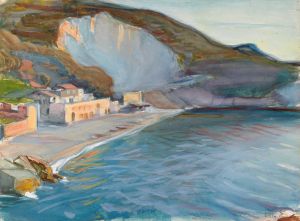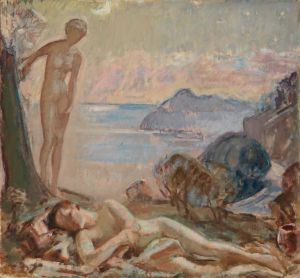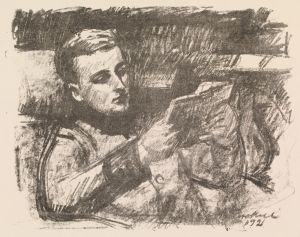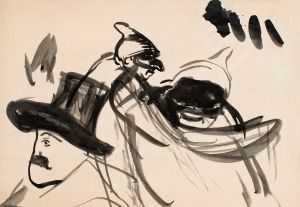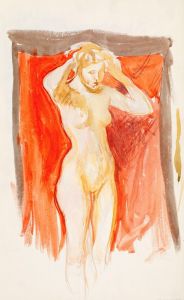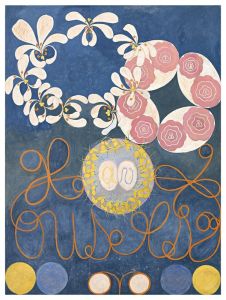
Awakening Faun
A hand-painted replica of Magnus Enckell’s masterpiece Awakening Faun, meticulously crafted by professional artists to capture the true essence of the original. Each piece is created with museum-quality canvas and rare mineral pigments, carefully painted by experienced artists with delicate brushstrokes and rich, layered colors to perfectly recreate the texture of the original artwork. Unlike machine-printed reproductions, this hand-painted version brings the painting to life, infused with the artist’s emotions and skill in every stroke. Whether for personal collection or home decoration, it instantly elevates the artistic atmosphere of any space.
"Awakening Faun" is a painting by the Finnish symbolist painter Magnus Enckell, created in 1914. Enckell, born on November 9, 1870, in Hamina, Finland, was a prominent figure in the Finnish art scene and is best known for his contributions to Symbolism and his role in the development of Finnish modern art. His works often explore themes of mythology, spirituality, and the human condition, characterized by a delicate use of color and light.
The painting "Awakening Faun" depicts a faun, a mythological creature that is part human and part goat, often associated with rustic music and the spirit of nature. In classical mythology, fauns are companions of Pan and Dionysus, embodying the playful and carefree aspects of the natural world. Enckell's portrayal of the faun captures a moment of awakening or realization, a common motif in Symbolist art that suggests a deeper, often spiritual or existential, understanding.
Enckell's style in "Awakening Faun" reflects his Symbolist influences, characterized by a focus on mood and emotion rather than realistic representation. The painting is noted for its subtle use of color and light, which creates an ethereal and dreamlike atmosphere. Enckell often employed a muted palette, using soft tones to evoke a sense of tranquility and introspection. This approach is evident in "Awakening Faun," where the gentle interplay of light and shadow enhances the mystical quality of the scene.
The composition of "Awakening Faun" is carefully balanced, with the faun positioned centrally, drawing the viewer's attention to its expression and posture. The background is typically sparse, a technique Enckell used to focus on the subject and convey a sense of timelessness and universality. This minimalist approach allows the viewer to engage more deeply with the emotional and symbolic content of the work.
Magnus Enckell was a key figure in the transition from the National Romantic style that dominated Finnish art in the late 19th century to a more modern, international approach. His work, including "Awakening Faun," reflects a synthesis of Finnish cultural themes with broader European artistic movements. Enckell was instrumental in founding the Septem group in 1912, which aimed to promote modern art in Finland and included artists who were interested in exploring new techniques and ideas.
"Awakening Faun" is part of Enckell's broader exploration of mythological and allegorical subjects, which he used to address themes of identity, transformation, and the intersection of the human and natural worlds. His interest in these themes can be seen as part of a larger Symbolist movement that sought to express the ineffable and explore the mysteries of existence through art.
Magnus Enckell's work, including "Awakening Faun," continues to be celebrated for its contribution to Finnish art and its role in the broader Symbolist movement. His paintings are held in various collections, including the Ateneum Art Museum in Helsinki, which houses many of his significant works. Enckell's legacy is marked by his ability to convey profound emotional and spiritual themes through a distinctive and evocative visual language.





